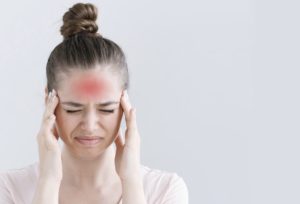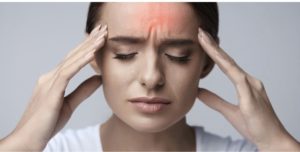Effectiveness of physical therapy on the suboccipital area of patients with tension-type headache: A meta-analysis of randomized controlled trials
- PMID: 31083183
- PMCID: PMC6531183
- DOI: 10.1097/MD.0000000000015487
Free PMC article
Abstract
Background: There has been a lot of research on physical therapy for tension-type headaches. However, the efficacy of physical therapy on the suboccipital region remains unclear.
Objective: To establish the effectiveness of physical therapy on the suboccipital area of patients with tension-type headache.
Methods: Databases including Cochrane Library, Medline/Pubmed, CNKI, Embase, and Google Scholar were searched. After independent study selection by 2 authors, data were extracted and collected independently. On 1 hand, authors compared the treatment of the suboccipital area with control group. On the other hand, the efficacy of several physical therapy techniques on the suboccipital region was compared. The quality of the included studies was assessed using the Cochrane Handbook. RevMan 5.3 software was used for data analysis. The primary outcome measures were the cervical range of motion, the visual analog scale, and headache disability inventory.
Results: Six randomized controlled trials with a total of 505 participants were included. Suboccipital soft-tissue inhibition technique (SIT) + occiput-atlas-axis global manipulation (OAA) was more effective than SIT in increasing craniocervical extension at 4 weeks post-treatment, the overall mean differences (MD) was 3.61, 95% confidence interval (CI) (0.89-6.34). There was no difference at 8 weeks post-treatment (MD 2.38, 95% CI -1.02 to 5.78, P = .17). SIT was more effective than SIT + OAA in increasing cervical flexion at 4-week post-treatment (MD -3.36, 95% CI -6.65 to -0.05). SIT + OAA was more effective than SIT on decreasing intensity of pain at 4-week post-treatment (MD -0.91, 95% CI -1.78 to -0.04), but no difference at 8-week (MD -0.43, 95% CI -1.18 to 0.33, P = .27). SIT + OAA was more effective than SIT in reducing the functional score of the headache disability inventory at 4-week post-treatment (MD -4.47, 95% CI -8.44 to -0.50). These results may indicate that the SIT + OAA combined therapy is more effective in short term (4-week), no major difference in longer term (8-week).
Conclusion: Combined therapy may be more suitable for the treatment of tension-type headache.
Conflict of interest statement
All the authors declare that they have no conflicts of interest.
Is Physical Therapy effective for Headaches?
CORE Omaha Physical Therapy Explains.
By Dr. Mark Rathjen PT DPT CSCS
CORE Physical Therapy and Sports Performance Omaha.
The conclusion of this study states “These results may indicate that the SIT + OAA combined therapy is more effective in short term (4-week), no major difference in longer term (8-week).”
What does this mean?
It means that for short term relief of tension headaches, manual mobilizations and sub occipital tension release combined are effective in decreasing headaches duration and intensity. Longer term outcomes have less efficacy overall, but would lead us to believe adding in the above interventions allows the body, and traditional physical therapy and posture training leads to faster and more efficient outcomes. Halving the time of recovery for a headache patients is not an insignificant amount of time. In fact, it decreased the time of the headaches by 4 weeks; quite substantial if you have ever fallen victim to experiencing one.
This study exhibits a high number of participant at 500+ and should be viewed as a high powered study. It is important to note that self reported symptoms on a subjective scale was primarily used to determine outcomes.
A trained physical therapist is manual techniques and mobilizations should be able to effectively perform the interventions described and utilized in the above study. Make sure you seek out a trained physical therapist in Omaha with years of experience in manual physical therapy. In Omaha you do have a lot of choices, so choose well.
CORE Physical Therapy specializes in athletes and manual interventions. Over the decades we have learned that recovery is faster and more efficient when manual and hands on physical therapy is involved. We have also learned that having more than one person involved in your care, increase rate of recovery and decreased long term outcomes. Case and point of why we do not share patients are shift you around. We see our patients one on one. We do not use physical therapy assistants in the treatment of our patients.
At CORE Physical Therapy in Omaha, We specialize in the treatment of athletes. We have worked with athletes for a combined 30 years.
This is who are, This is what we do.
Owned and Operated
by
Dr. Mark Rathjen and Dr. Claire Rathjen.
CORE is a family owned business that has been
established in 2015
We are proud to serve the greater Omaha metro area.
For More information, Please feel free to contact us https://coreomaha.com/contact/
Please feel free to follow us at https://www.facebook.com/COREomaha/
To get started https://coreomaha.com/getting-started/
For more Blog information https://coreomaha.com/blog/
CORE Physical Therapy and Sports Performance PC.
17660 Wright St, suites 9/10
Omaha, NE 68130
402-933-4027
Youtube Account linked below.
https://www.youtube.com/channel/UCVg8OSN5h-i1n_ykw1Gvahg?view_as=subscriber
Similar articles
-
J Bodyw Mov Ther. 2014 Oct;18(4):576-85. doi: 10.1016/j.jbmt.2014.01.001. Epub 2014 Jan 10.PMID: 25440210 Clinical Trial.
-
Cephalalgia. 2015 Dec;35(14):1323-32. doi: 10.1177/0333102415576226. Epub 2015 Mar 6.PMID: 25748428 Review.
-
Eur J Phys Rehabil Med. 2014 Dec;50(6):641-7. Epub 2014 Apr 30.PMID: 24785463 Clinical Trial.
-
Chiropr Man Therap. 2019 Sep 26;27:43. doi: 10.1186/s12998-019-0266-7. eCollection 2019.PMID: 31572570 Free PMC article.
-
Evid Based Child Health. 2013 Jan;8(1):57-109. doi: 10.1002/ebch.1893.PMID: 23878124 Review.








